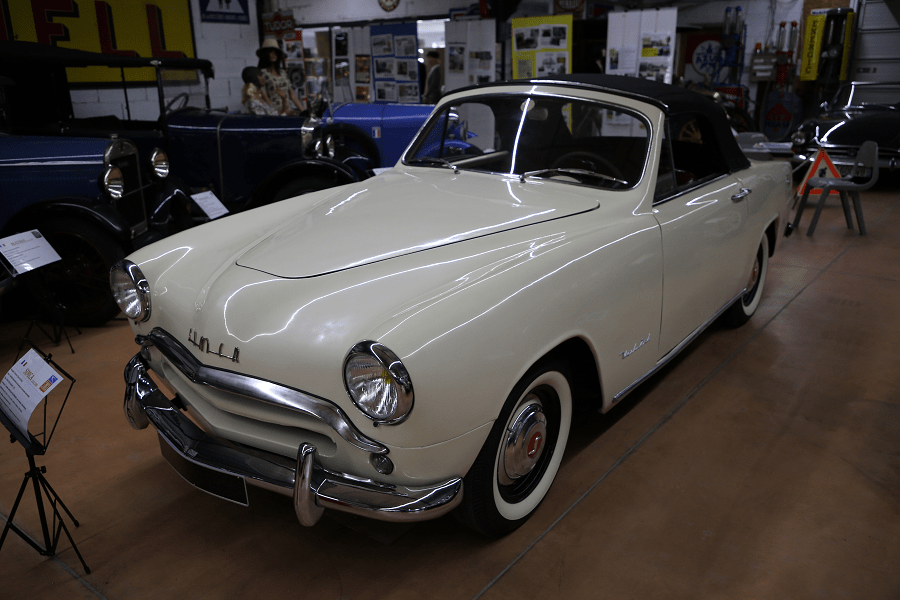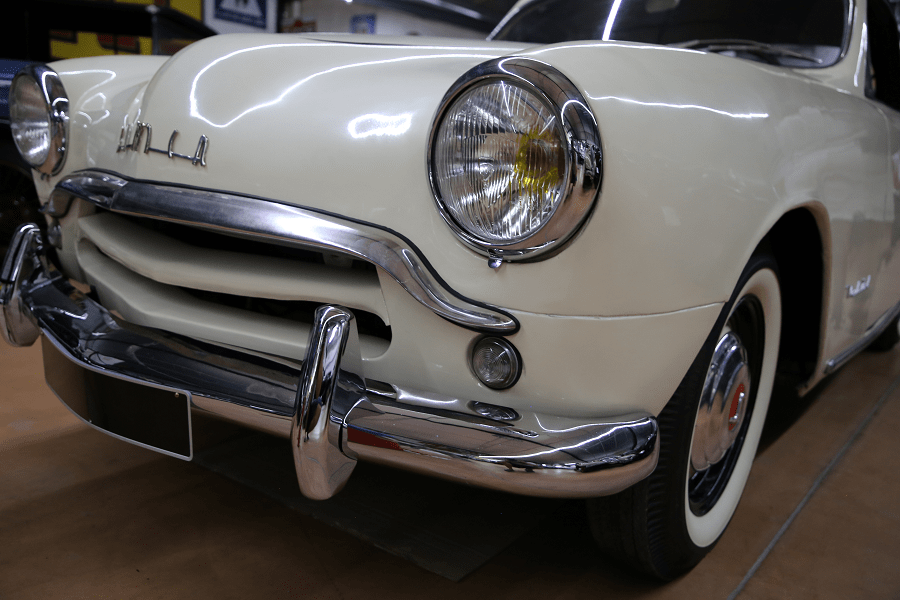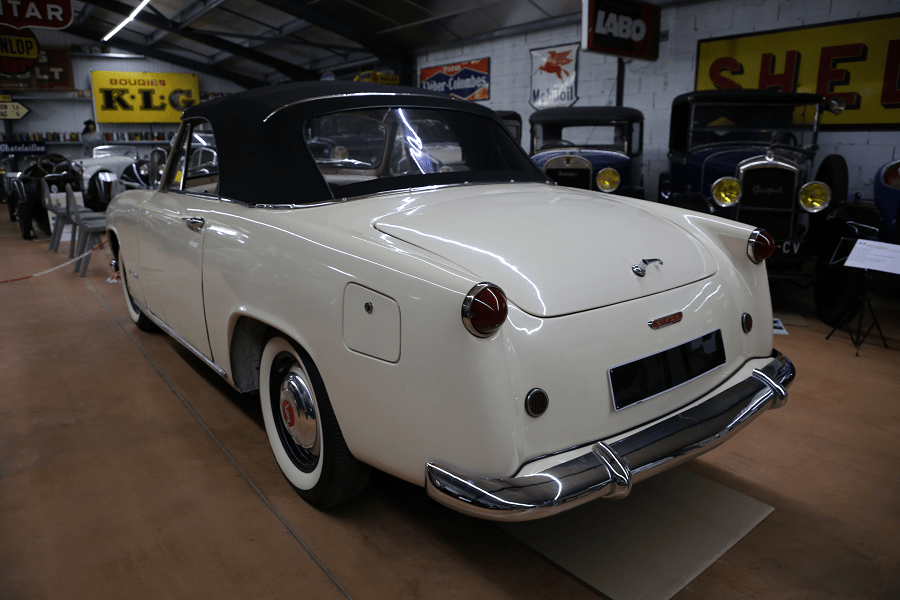White Simca 9 Aronde Weekend Cabriolet from 1956 with four cylinders, 1221 cc, 51 HP. Max. speed: 135 km/h
The Simca Aronde is an automobile which was manufactured by the French automaker Simca from 1951 to 1964. It was Simca’s first original design (earlier models were all to a greater or lesser extent based on Fiats), as well as the company’s first unibody car. “Aronde” means “swallow” in Old French and it was chosen as the name for the model because Simca’s logo at that time was a stylized swallow.
Simca 9 Aronde
The first Aronde debuted in the spring of 1951 but initially only a few hundred pre-production cars were distributed to carefully selected “guinea-pig” buyers, and the full production version was finalised only in time for the Paris Motor Show, becoming available for sale in October 1951.
The full production version incorporated various detail changes when compared to the pre-volume production cars, including a changed material for the seat covers and a moulded plastic dash-board which at the time appeared very modern when compared to the metal dashboard on the Aronde’s most obvious competitor, the Peugeot 203. A few months later, at the start of 1952, space was found to position the battery under the bonnet/hood: in the earliest cars the battery was stowed under the front seat.
The Aronde was fitted with a front-mounted 1221 cc 44.5 bhp (33.2 kW) engine from the previous Simca model, the Simca 8, fuel feed being provided by a Solex 32 carburetor. Power was delivered to the rear wheels via a traditional four-speed manual gear box incorporating synchromesh on the top three ratios. The car had independent suspension at the front using coil springs, with a live axle at the rear, suspended using semi-elliptic leaf springs. Hydraulically operated 9.85 in (250 mm) drum brakes were used all round.
The only body style offered at the October 1951 launch was a four-door saloon/sedan/berline, but other configurations very soon became available such as the three-door estate (branded initially as the “Aronde commerciale” and later as the “Châtelaine”) with a horizontally split tailgate.
There was also a van, called the “Messagère”, and a “commerciale semi-vitrée” – part panel van and part estate – became available in 1953. Of more interest to collectors is the two-door coupé coachbuilt by Facel. The Facel-built coupé was replaced for 1953 by a coupé based on the saloon Aronde body, called Grand Large, featuring a large three piece wrap-around rear window and a “pillarless” side window effect when both side windows were wound down.
A two-door cabriolet conversion, prepared by the coachbuilder Figoni, was presented to the public for the 1953 model year in a display involving ballerinas, but it proved impossible to confer sufficient structural rigidity on this car without unacceptable cost and weight penalties, and Figoni’s Aronde cabriolet was never produced for sale.
The 1952 Motor Show saw several manufacturers attempting to broaden the appeal of mainstream ranges with stripped down versions offered at a reduced price. The trend seems to have been started by Renault with their 4CV Service, and they were quickly followed by other automakers in including Rosengart and Simca. Simca’s “Aronde Quotidienne” was offered from January 1953 with an advertised price of 630,000 francs, which was a saving of 45,000 against the previous base model (confusingly branded, even then, as the “Aronde Berline Luxe”). The interior of the Quotidienne was simplified and the heater disappeared, as did most of the exterior trim. Nevertheless, chrome headlight surrounds remained in place: importantly, too, buyers of the “Aronde Quotidienne” could still choose from the full range of body colours offered on the “Aronde Berline Luxe”. The company was keen to stress that the stripped down Aronde was not as fully stripped down as the Renault Frégate Affaires (available only in black), the Renault 4CV Service or the Rosengart Artisane (these last two being offered only in grey).
The 9 Aronde was well received, especially in France. It took only until 17 March 1953 before total production of this model at the Nanterre plant passed 100,000.
The company’s flamboyant boss. Henri Pigozzi, was keenly aware of the publicity that could be generated from the craze for record breaking runs. In May 1952 an Aronde broke five international records by covering a distance of 50,000 km (31,000 mi) at an average speed of 117 km/h (73 mph), and in August 1953 another Aronde, selected at random from the production line, returned to the Montlhéry circuit for a new record attempt whereby during the course of forty days and forty nights the car covered 39,242 laps which represented 100,000 km (62,000 mi) at an average speed of more than 104 km/h (65 mph). This achievement, which involved breaking more than 30 international records, was undertaken under the supervision of the ACF.
A car tested in France by the British Motor magazine in 1951 had a top speed of 73.9 mph (118.9 km/h) and could accelerate from 0-60 mph (97 km/h) in 30.2 seconds.
A fuel consumption of 34.1 miles per imperial gallon (8.3 L/100 km; 28.4 mpg‑US) was recorded. The test car was reported to cost 970 Francs on the French market. It was not at the time available in the UK but the price was converted to £657.
















